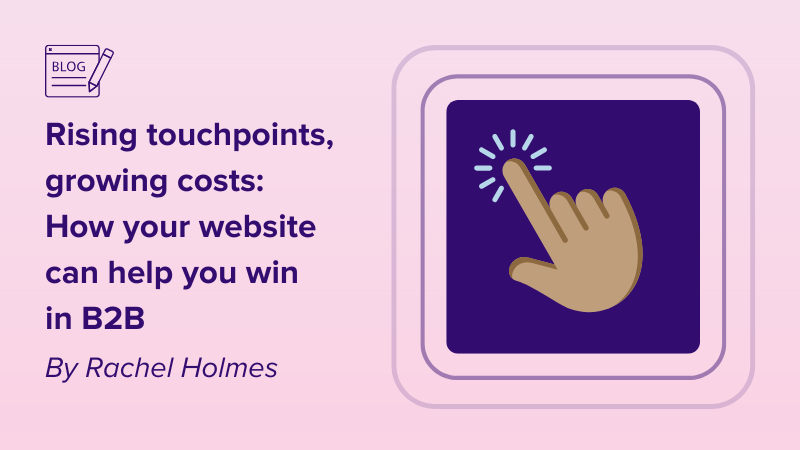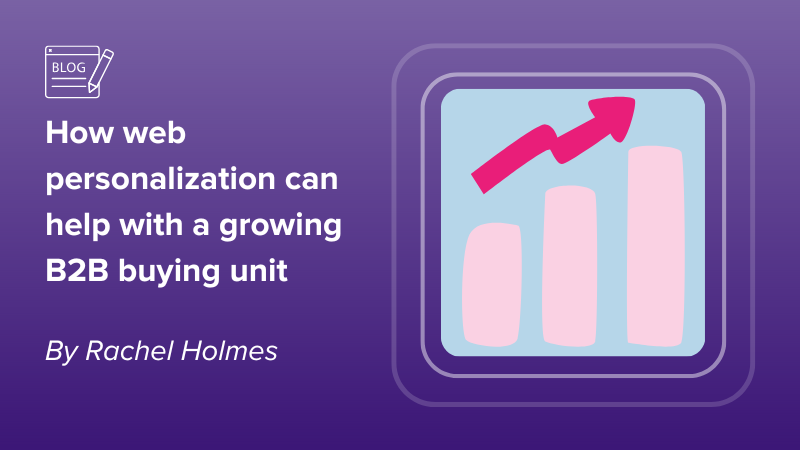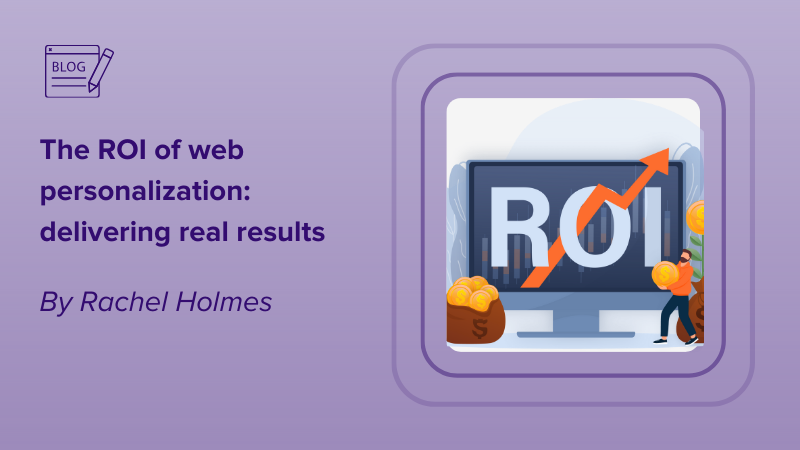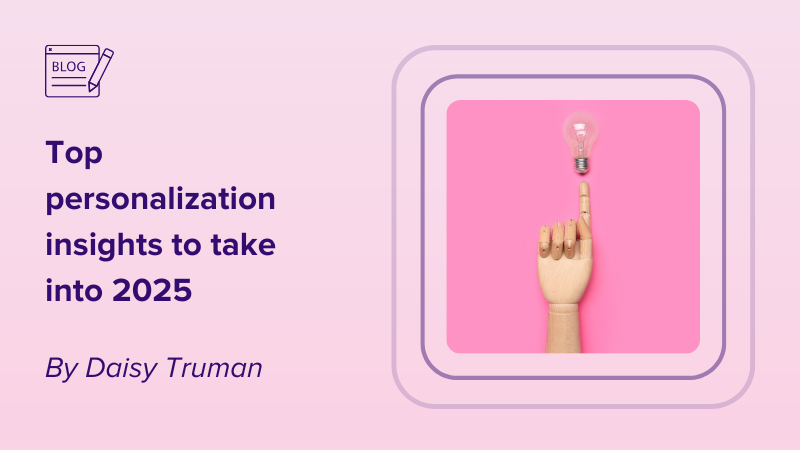The B2B customer journey is forever evolving, and as marketers, we’re always looking to stay ahead. Using personalization to respond to buyers in the way they want to interact and buy from us.
Recent research from HockeyStack shows that the number of touchpoints needed to close deals has increased significantly over the last 12 months to 96 touchpoints to generate an SQL. This increase is reflective for each conversion point from Marketing Qualified Lead (MQL) to Closed Won. For instance, impressions needed for a website visit have jumped from 723 to 894, marking a 23% increase. This rise means businesses must engage prospects more frequently at every stage of the customer journey not just for the first website visit.
The website: A critical touchpoint in the journey
With the increase in touchpoints, the website has become more important than ever as a primary touchpoint. It’s often the first destination where prospects engage with your brand in a meaningful way.
Your website acts as a digital storefront, whether it’s a landing page, a self-serve product tour, or a blog article. It represents your company’s identity, offerings, and values. You’ve put a lot of effort and budget into getting visitors into the “store,” so you want to keep them there as long as possible!
Given the extended journey to get prospects onto your site, the website’s role must go beyond just being informative, it needs to be engaging, relevant and helpful. B2B brands need to ensure that the experience is seamless, responsive, and designed to capture and nurture interest. A well-optimized website can reduce friction. This makes it easier for visitors to progress through their journey, moving from that initial touchpoint toward becoming a qualified lead and, eventually, a customer.
The power of web personalization
Web personalization can be a game-changer to counteract the increase in touchpoints and shorten the time it takes for prospects to move through the funnel. Personalizing the website experience involves tailoring content, calls-to-action, messaging, and social proof. This customization is based on a visitor’s profile data—such as industry, role, and company size—as well as their intent and behaviors.
For example, if a visitor has previously engaged with a specific product/solution, the website can dynamically showcase related products, case studies, or testimonials. This targeted approach ensures that visitors receive relevant information that resonates with them, increasing the likelihood of conversion.
With anywhere up to 80% of the buying journey done without the involvement of sales, sales and marketing teams need to engage with buyers effectively early in their journey and this is when they’re on the website.
Web personalization tools like Webeo can track and analyze visitor behavior at account and contact level. Helping businesses understand which content drives engagement and which touchpoints are most effective. Moreover, this data-driven approach not only enhances the user experience but also shortens the path from the first website visit to becoming a qualified lead and customer.
In today’s B2B landscape, where the journey from impression to closed deal is longer and more touchpoint-heavy. Businesses must prioritize their website as a key element in their strategy. By delivering a personalized experience, companies can reduce the number of touchpoints. This approach helps move prospects through the funnel more quickly. Ultimately, it drives more conversions.
Investing in personalization on your website is no longer optional – it’s essential.
HockeyStack: https://hockeystack.com/lab-blog-posts/b2b-customer-journey-touchpoints





